Design and Optimization of a Wireless Power Transfer System with a High Voltage Transfer Ratio
Abstract
:1. Introduction
- (i)
- The mathematical models of different compensation topologies are established and the variation of transformation ratio with circuit parameters is obtained, so as to calculate the output characteristics of different topologies and to determine the compound resonant topology network design used in this paper.
- (ii)
- The coupling structure is designed afterwards, and the coil and ferrite dimensions are optimized through finite element simulation to ensure that the coupling coefficient agrees with the design requirements.
- (iii)
- The closed-loop control scheme of the system is studied, and the parameters in the control system are optimized to ensure stable loop output of the WPT system.
- (iv)
- Finally, an experimental platform is established and the corresponding design parameters are verified through experimental results, including the voltage transformation ratio, output characteristics, etc.
2. Theoretical Analysis
2.1. System Architecture
2.2. Circuit Analysis
2.3. Power and Efficiency Analysis
2.3.1. When the System Works in Constant-Current State
2.3.2. When the System Works in Constant Voltage State
3. Design of Magnetic Coupling Structure
4. Experimental Validation
4.1. Verification on Coupling Mechanism
4.2. Verification on System Output Characteristics
4.3. Comparison with existing literature
5. Conclusions
Author Contributions
Funding
Data Availability Statement
Conflicts of Interest
References
- Kurs, A.; Karalis, A.; Moffatt, R.; Joannopoulos, J.D.; Fisher, P.; Soljacic, M. Wireless power transfer via strongly coupled magnetic resonances. Science 2007, 317, 83–86. [Google Scholar] [CrossRef] [PubMed] [Green Version]
- Sample, A.P.; Meyer, D.T.; Smith, J.R. Analysis, Experimental Results, and Range Adaptation of Magnetically Coupled Resonators for Wireless Power Transfer. IEEE Trans. Ind. Electron. 2011, 58, 544–554. [Google Scholar] [CrossRef]
- Cheon, S.; Kim, Y.; Kang, S.; Lee, M.L.; Lee, J.; Zyung, T. Circuit-Model-Based Analysis of a Wireless Energy-Transfer System via Coupled Magnetic Resonances. IEEE Trans. Ind. Electron. 2013, 60, 360–371. [Google Scholar] [CrossRef]
- Ahn, D.; Hong, S. Effect of Coupling Between Multiple Transmitters or Multiple Receivers on Wireless Power Transfer. IEEE Trans. Ind. Electron. 2013, 60, 2602–2613. [Google Scholar] [CrossRef]
- Tang, Y.; Zhu, F.; Wang, Y.; Ma, H. Design and optimizations of solenoid magnetic structure for inductive power transfer in EV applications. In Proceedings of the IECON 2015-41st Annual Conference of the IEEE Industrial Electronics Society, Yokohama, Japan, 9–12 November 2015; IEEE: New York, NY, USA, 2015; pp. 001459–001464. [Google Scholar] [CrossRef]
- Tang, Y.; Chen, Y.; Madawala, U.K.; Thrimawithana, D.J.; Ma, H. A New Controller for Bi-directional Wireless Power Transfer Systems. IEEE Trans. Power Electron. 2017, 33, 9076–9087. [Google Scholar] [CrossRef]
- Tang, Y.; Zhu, F.; Ma, H. Efficiency Optimization with a Novel Magnetic-Circuit Model for Inductive Power Transfer in EVs. J. Power Electron. 2018, 18, 309–322. [Google Scholar]
- Tang, Y.; Ma, H. Dynamic Electrothermal Model of Paralleled IGBT Modules with Unbalanced Stray Parameters. IEEE Trans. Power Electron. 2017, 32, 1385–1399. [Google Scholar] [CrossRef]
- Li, Z.; Zhu, C.; Jiang, J.; Song, K.; Wei, G. A 3-kW Wireless Power Transfer System for Sightseeing Car Supercapacitor Charge. IEEE Trans. Power Electron. 2017, 32, 3301–3316. [Google Scholar] [CrossRef]
- Budhia, M.; Covic, G.A.; Boys, J.T. Design and Optimization of Circular Magnetic Structures for Lumped Inductive Power Transfer Systems. IEEE Trans. Power Electron. 2011, 26, 3096–3108. [Google Scholar] [CrossRef]
- Bosshard, R.; Iruretagoyena, U.; Kolar, J.W. Comprehensive Evaluation of Rectangular and Double-D Coil Geometry for 50 kW/85 kHz IPT System. IEEE J. Emerg. Sel. Top. Power Electron. 2016, 4, 1406–1415. [Google Scholar] [CrossRef]
- Budhia, M.; Covic, G.; Boys, J. A new IPT magnetic coupler for electric vehicle charging systems. In Proceedings of the IECON 2010—36th Annual Conference on IEEE Industrial Electronics Society, Glendale, AZ, USA, 7–10 November 2010; IEEE: New York, NY, USA, 2010; pp. 2487–2492. [Google Scholar]
- Zaheer, A.; Kacprzak, D.; Covic, G.A. A bipolar receiver pad in a lumped IPT system for electric vehicle charging applications. In Proceedings of the 2012 IEEE Energy Conversion Congress and Exposition (ECCE), Raleigh, NC, USA, 15–20 September 2012; IEEE: New York, NY, USA, 2012; pp. 283–290. [Google Scholar] [CrossRef]
- Futagami, D.; Sawahara, Y.; Ishizaki, T.; Awai, I. Study on high efficiency WPT underseas. In Proceedings of the 2015 IEEE Wireless Power Transfer Conference (WPTC), Boulder, CO, USA, 13–15 May 2015; pp. 1–4. [Google Scholar]
- Yoon, S.-H.; Kim, T.-H.; Yook, J.-G.; Yun, G.-H.; Lee, W.-Y. High Q-factor WPT system with negative impedance converter. In Proceedings of the 2017 IEEE Wireless Power Transfer Conference (WPTC), Taipei, China, 3–7 June 2017; pp. 1–4. [Google Scholar] [CrossRef]
- Takehiro, I.; Hiroyuki, O.; Toshiyuki, U.; Yoichi, H. Study of Magnetic and Electric Coupling for Contactless Power Transfer Using Equivalent Circuits. IEEE Trans. Ind. Appl. 2010, 130, 84–92. [Google Scholar]
- Koh, K.E.; Beh, T.C.; Imura, T.; Hori, Y. Impedance Matching and Power Division Using Impedance Inverter for Wireless Power Transfer via Magnetic Resonant Coupling. IEEE Trans. Ind. Appl. 2014, 50, 2061–2070. [Google Scholar] [CrossRef]
- Beh, T.C.; Kato, M.; Imura, T.; Oh, S.; Hori, Y. Automated Impedance Matching System for Robust Wireless Power Transfer via Magnetic Resonance Coupling. IEEE Trans. Ind. Electron. 2013, 60, 3689–3698. [Google Scholar] [CrossRef]
- Villa, J.L.; Sallan, J.; Osorio, J.F.S.; Llombart, A. High-Misalignment Tolerant Compensation Topology for ICPT Systems. IEEE Trans. Ind. Electron. 2012, 59, 945–951. [Google Scholar] [CrossRef]
- Hu, A.P. Selected Resonant Converters for IPT Power Supplies. Ph.D. Thesis, Department of Electrical and Computer Engineering, University of Auckland, Auckland, New Zealand, 2011. [Google Scholar]
- Zhang, W.; Mi, C.C. Compensation Topologies of High-Power Wireless Power Transfer Systems. IEEE Trans. Veh. Technol. 2016, 65, 4768–4778. [Google Scholar] [CrossRef]
- Li, S.; Li, W.; Deng, J.; Nguyen, T.D.; Mi, C.C. A Double-Sided LCC Compensation Network and Its Tuning Method for Wireless Power Transfer. IEEE Trans. Veh. Technol. 2015, 64, 2261–2273. [Google Scholar] [CrossRef]
- Lim, Y.; Tang, H.; Lim, S.; Park, J. An Adaptive Impedance-Matching Network Based on a Novel Capacitor Matrix for Wireless Power Transfer. IEEE Trans. Power Electron. 2014, 29, 4403–4413. [Google Scholar] [CrossRef]
- Berger, A.; Agostinelli, M.; Vesti, S.; Oliver, J.A.; Cobos, J.A.; Huemer, M. A Wireless Charging System Applying Phase-Shift and Amplitude Control to Maximize Efficiency and Extractable Power. IEEE Trans. Power Electron. 2015, 30, 6338–6348. [Google Scholar] [CrossRef]
- Matysik, J.T. The current and voltage phase shift regulation in resonant converters with integration control. IEEE Trans. Ind. Electron. 2007, 54, 1240–1242. [Google Scholar] [CrossRef]
- Zhou, J.; Yao, P.; Guo, K.; Cao, P.; Zhang, Y.; Ma, H. A Heterogeneous Inductive Power Transfer System for Electric Vehicles with Spontaneous Constant Current and Constant Voltage Output Features. Electronics 2020, 9, 1978. [Google Scholar] [CrossRef]
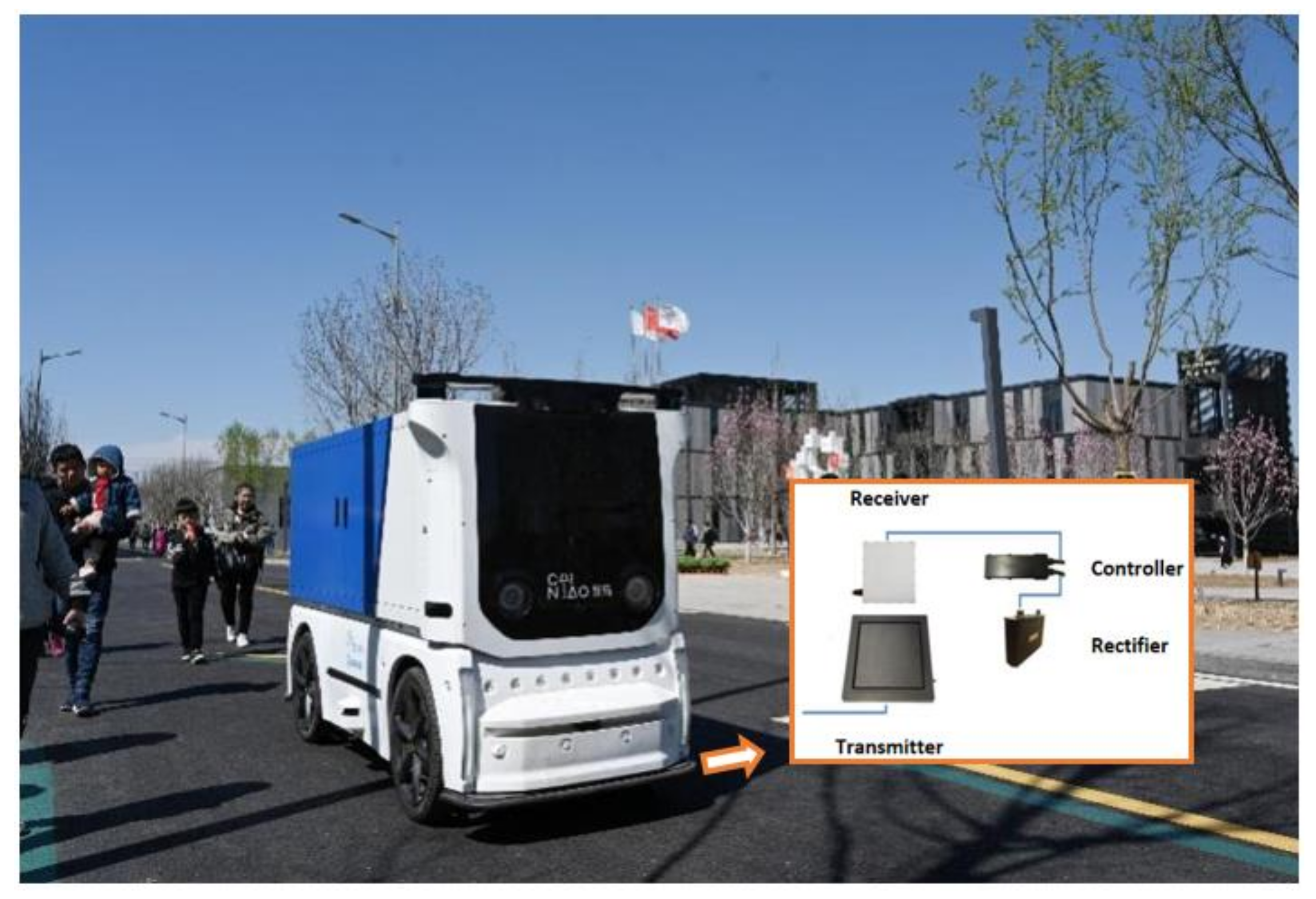
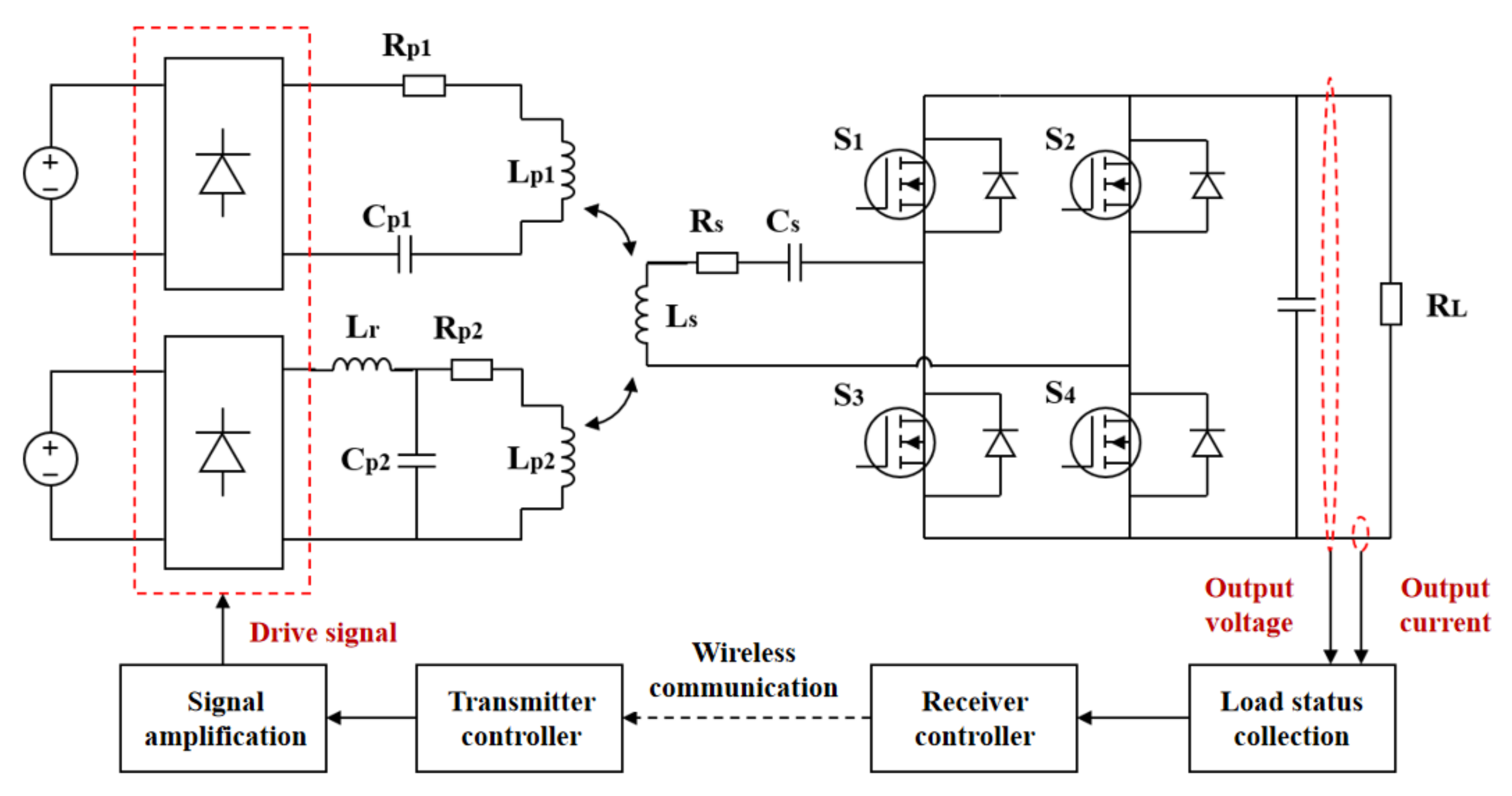
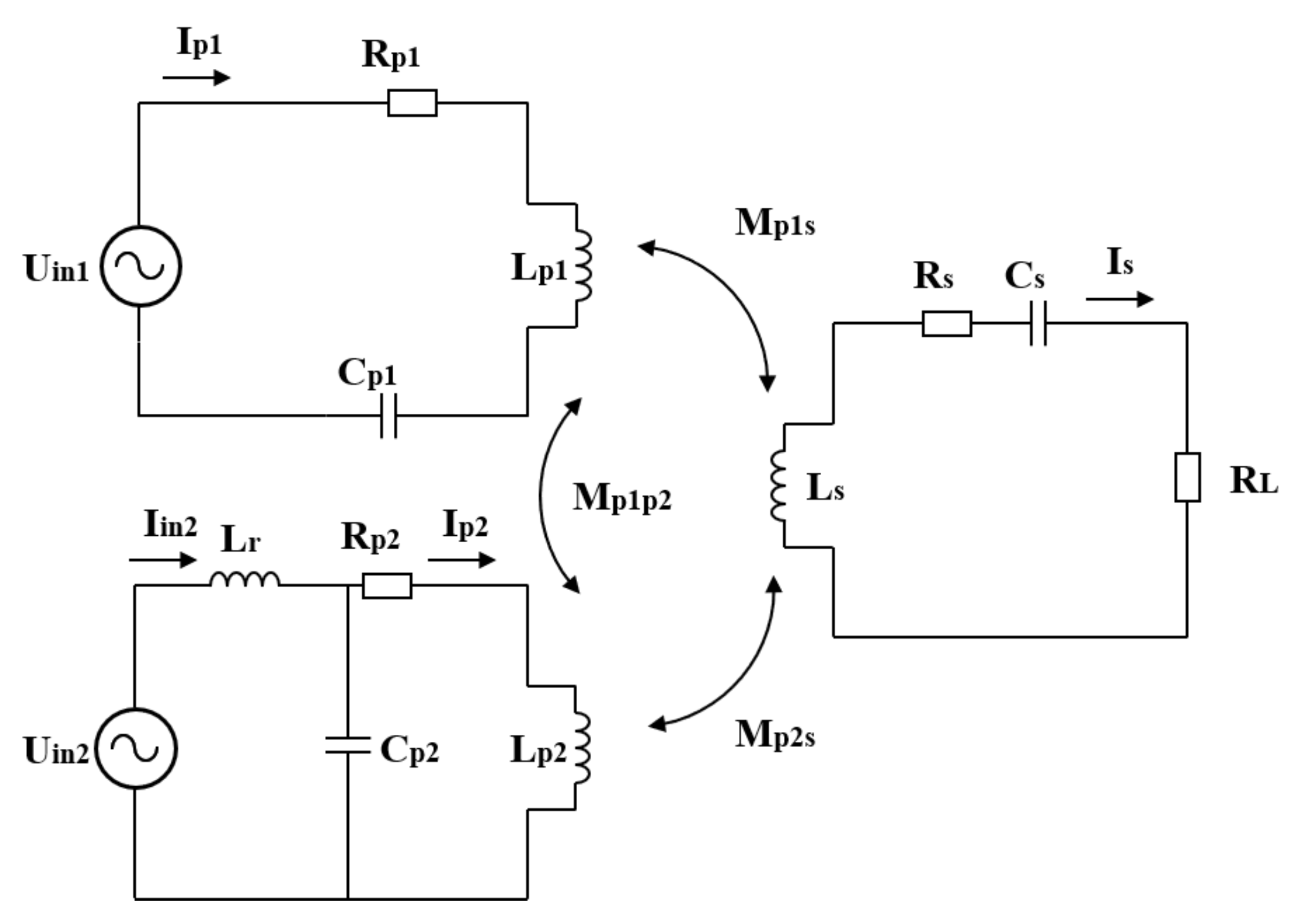

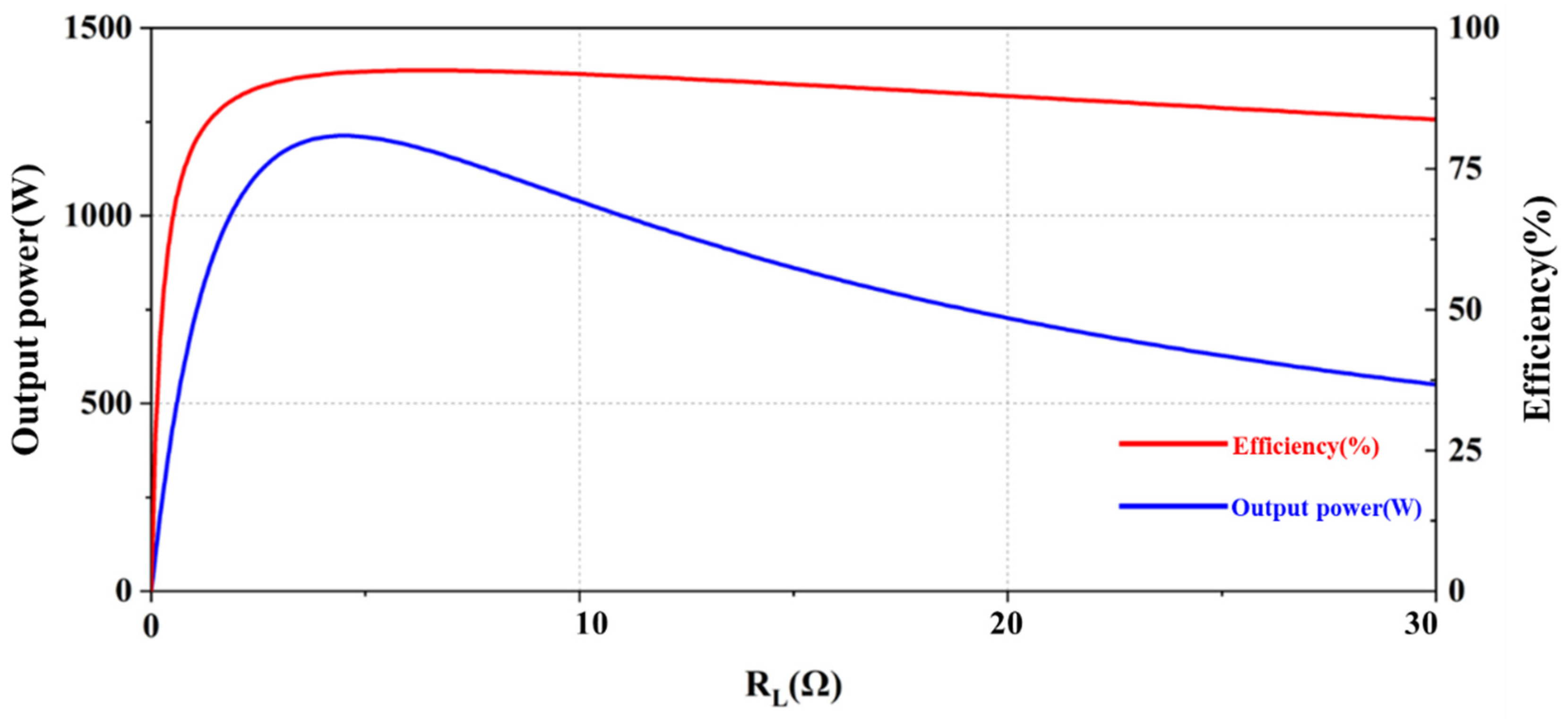
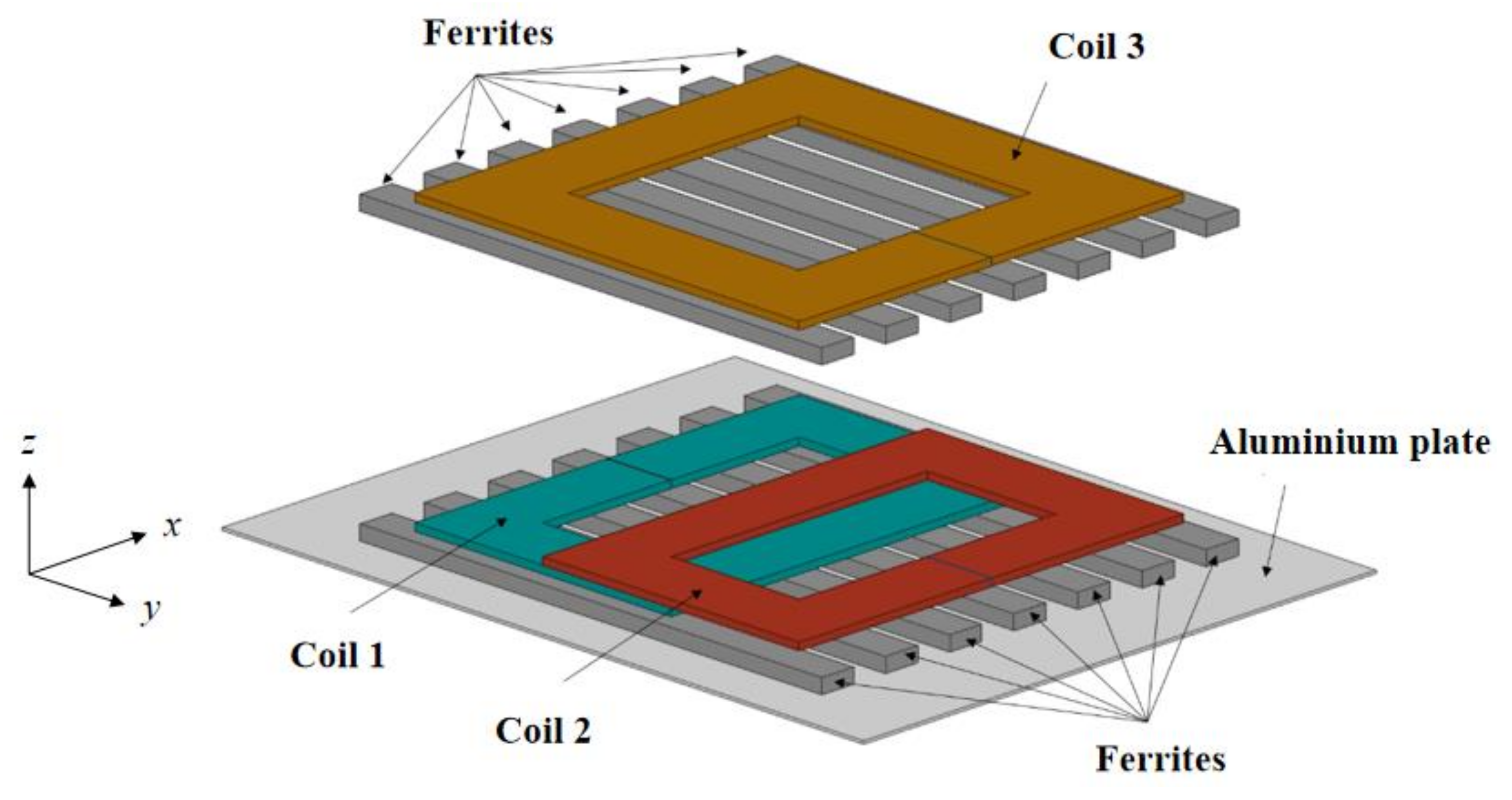
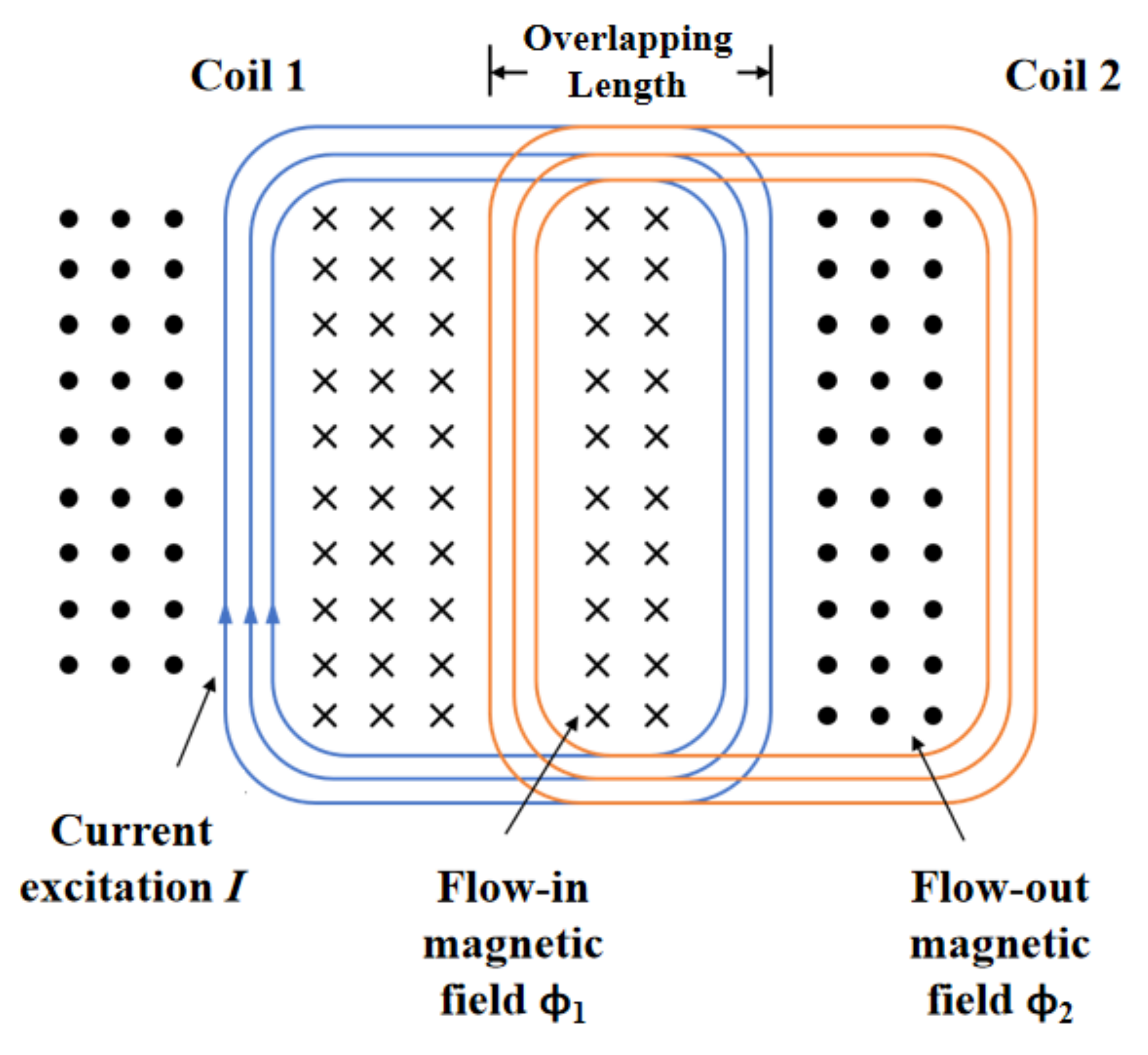


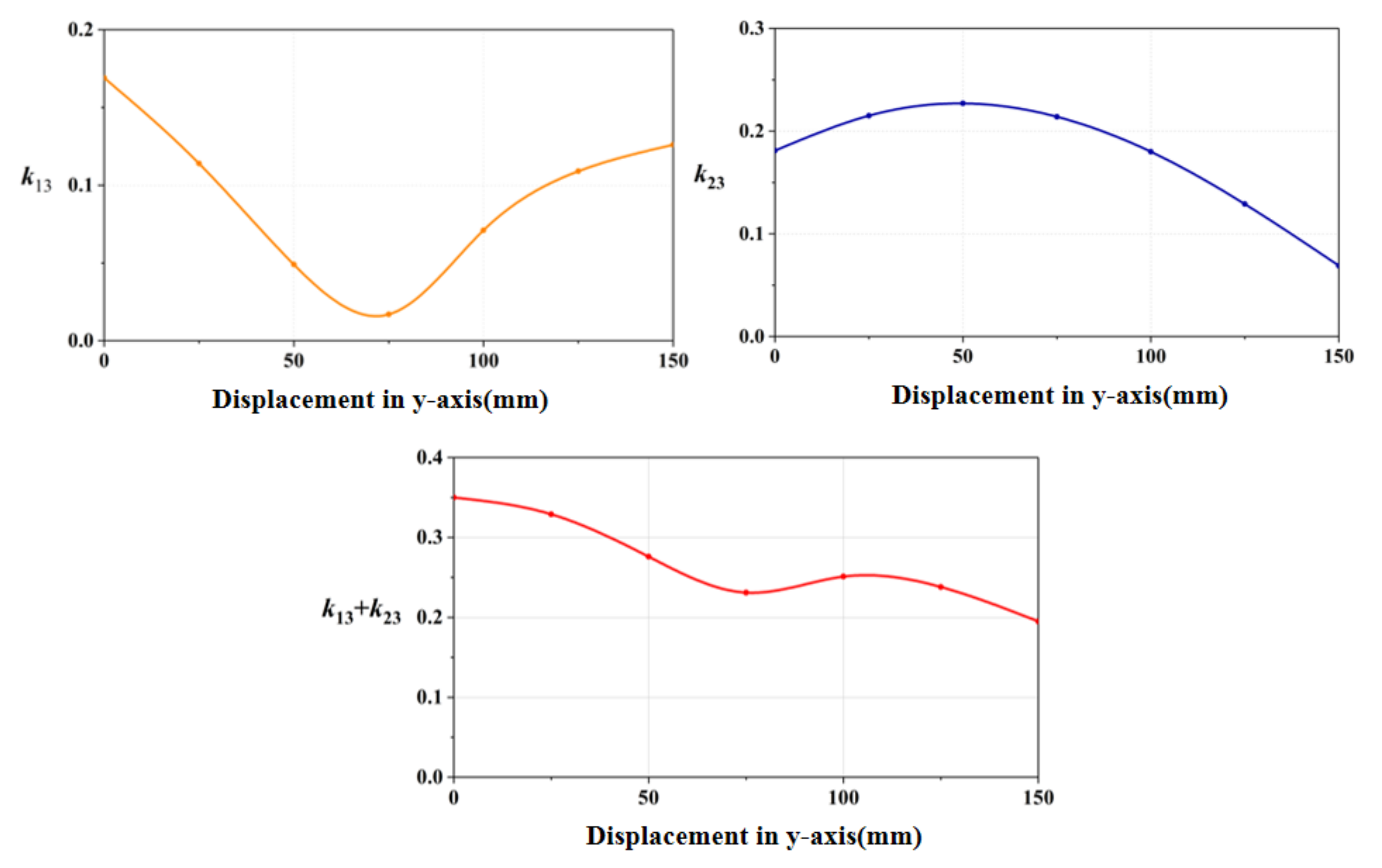
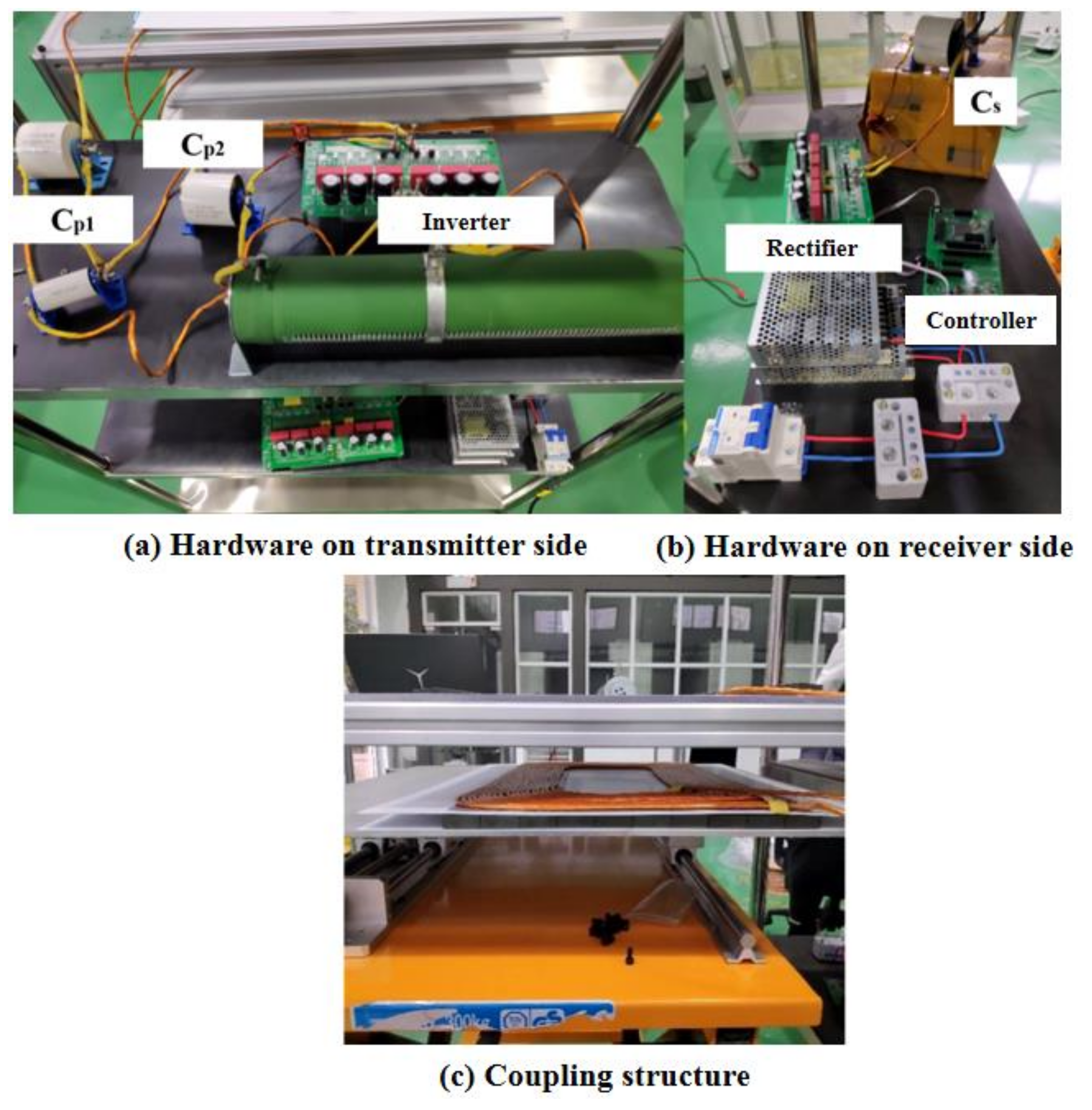
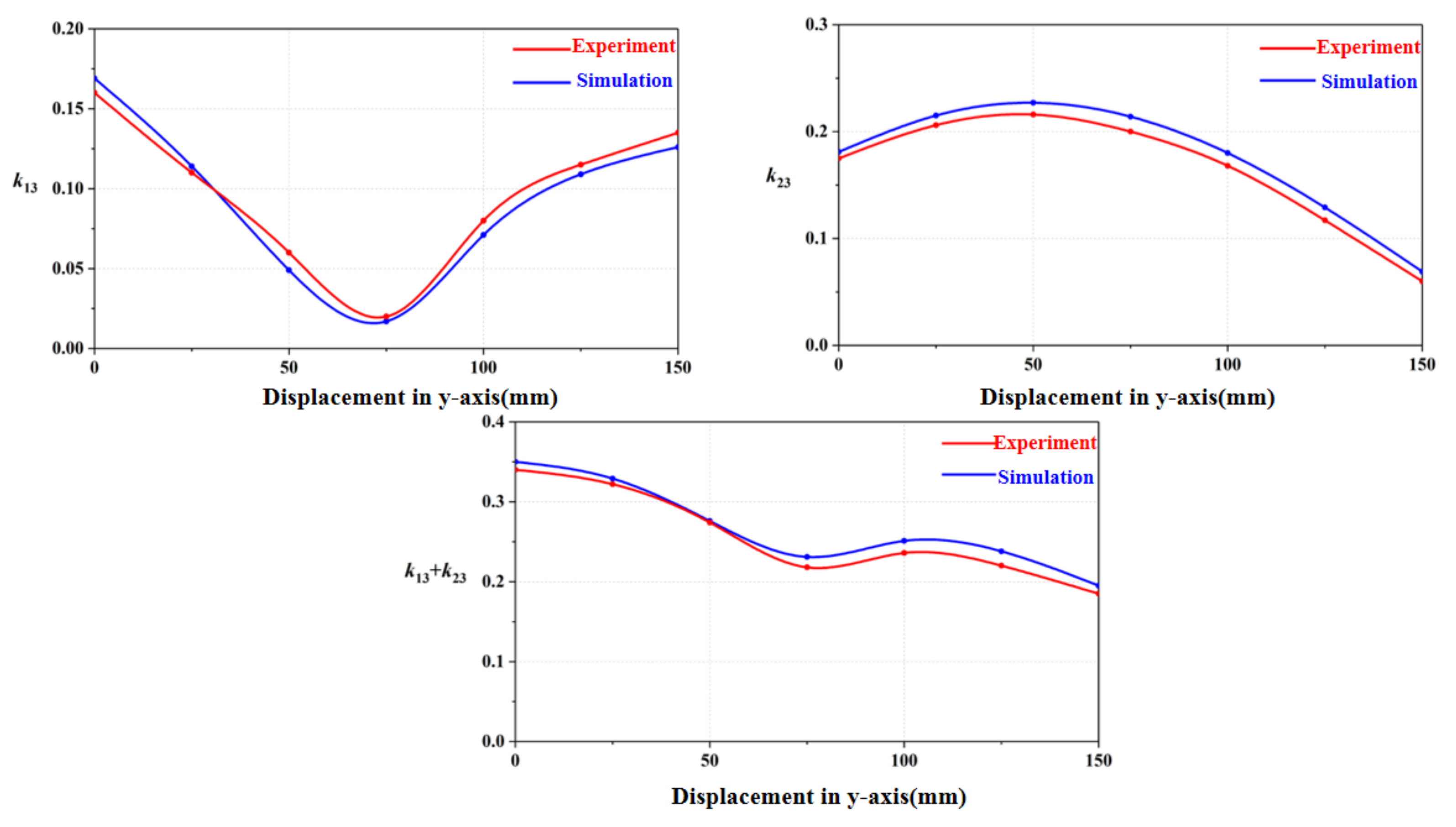
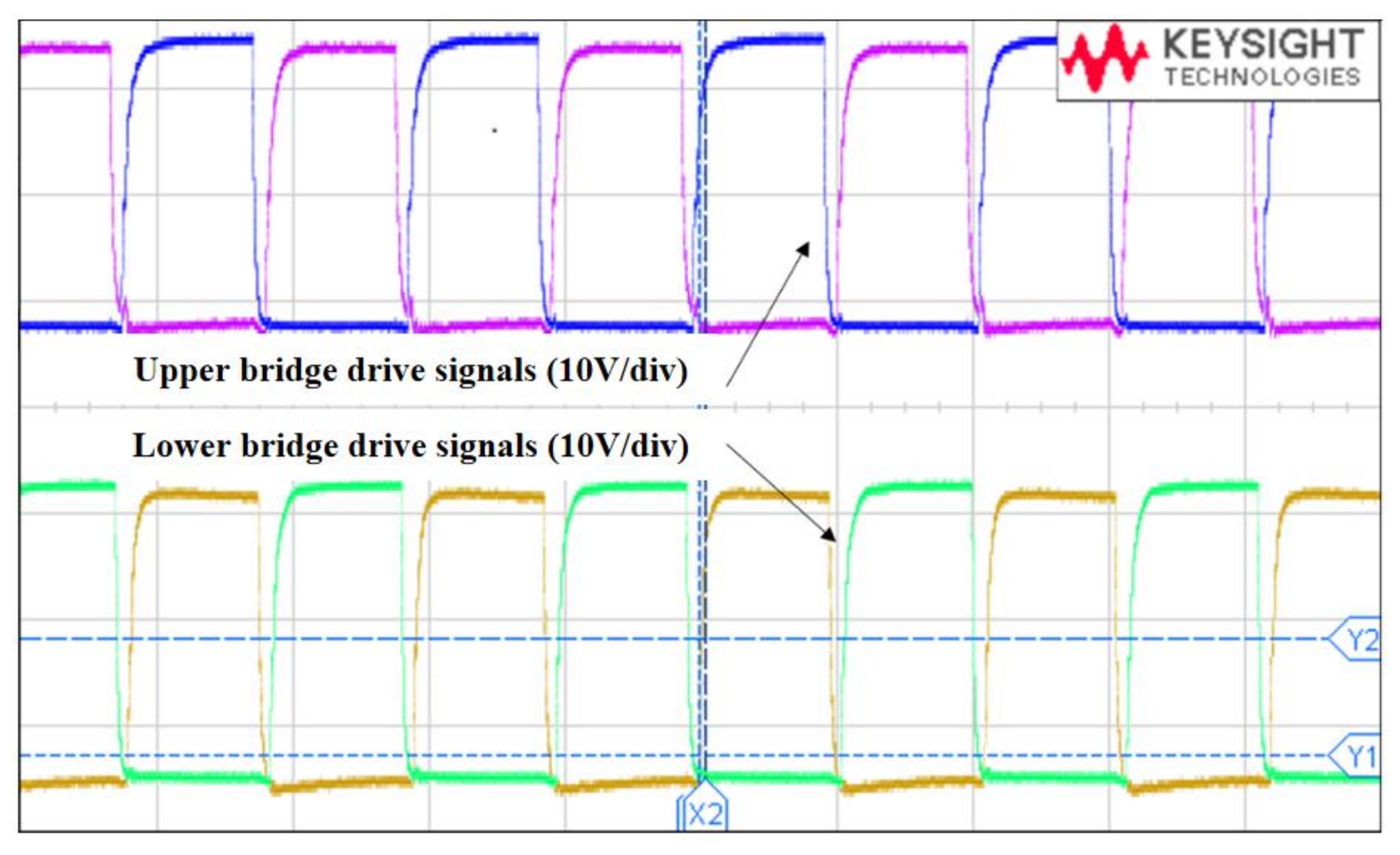
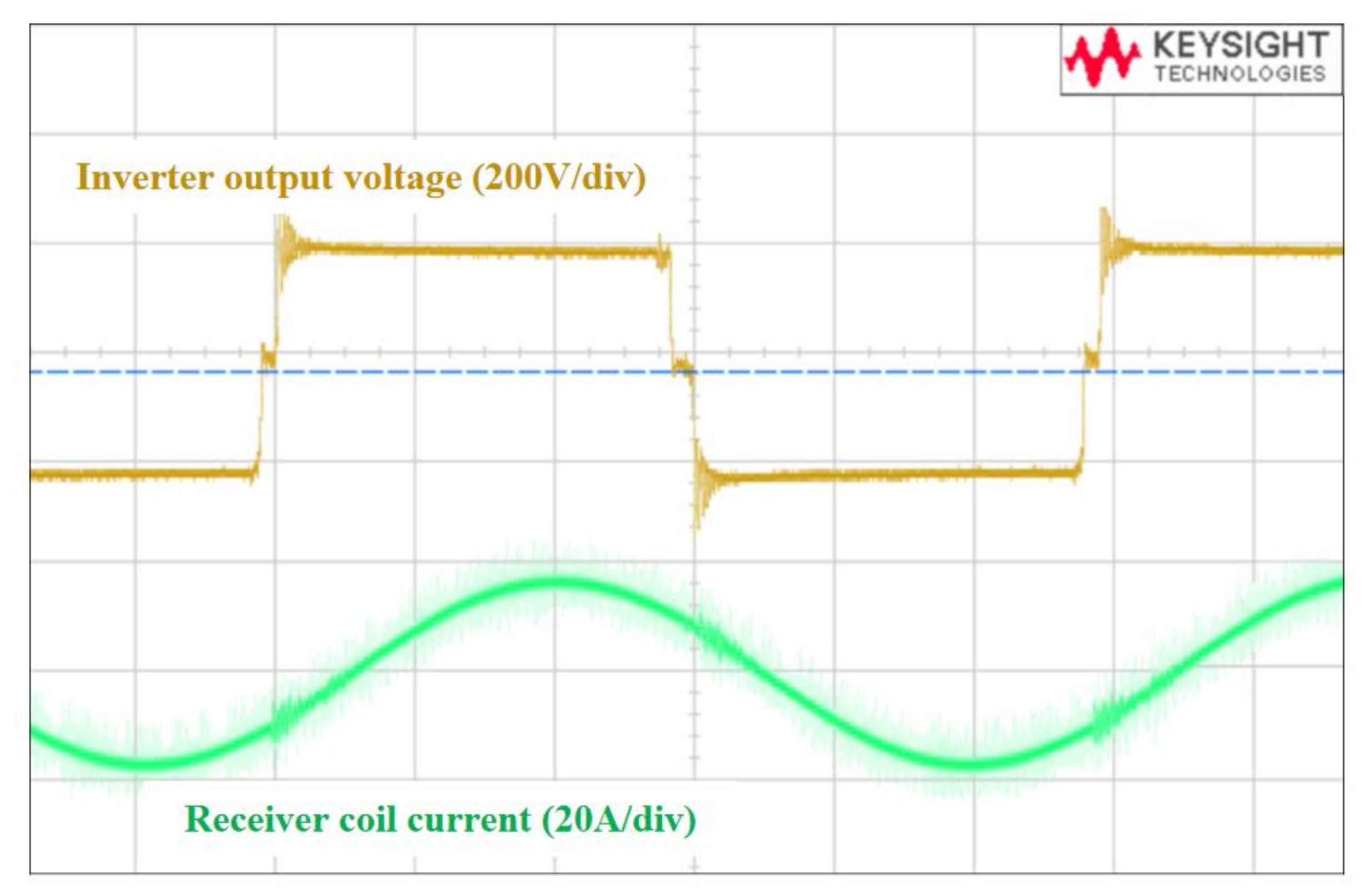


| Parameter | Value |
|---|---|
| Distance between transmitter and receiver | 100 mm |
| Turns of coils on transmitter side | 10 |
| Turns of coils on receiver side | 12 |
| Resistance of coils | 0.13 Ω, 0.128 Ω, 0.142 Ω@100 kHz |
| Lp1 | 90.4 uH |
| Lp2 | 82 uH |
| Ls | 107 uH |
| Resonant frequency | 85 kHz |
| Input DC voltage | 300 V |
| Cp1 | 38.8 nF |
| Cp2 | 42.7 nF |
| Cs | 32.7 nF |
| Lr | 12 uH |
Publisher’s Note: MDPI stays neutral with regard to jurisdictional claims in published maps and institutional affiliations. |
© 2022 by the authors. Licensee MDPI, Basel, Switzerland. This article is an open access article distributed under the terms and conditions of the Creative Commons Attribution (CC BY) license (https://creativecommons.org/licenses/by/4.0/).
Share and Cite
Zhou, J.; Wang, J.; Yao, P.; Lu, Y.; Yang, A.; Gao, J.; Hu, S. Design and Optimization of a Wireless Power Transfer System with a High Voltage Transfer Ratio. Electronics 2022, 11, 2115. https://doi.org/10.3390/electronics11142115
Zhou J, Wang J, Yao P, Lu Y, Yang A, Gao J, Hu S. Design and Optimization of a Wireless Power Transfer System with a High Voltage Transfer Ratio. Electronics. 2022; 11(14):2115. https://doi.org/10.3390/electronics11142115
Chicago/Turabian StyleZhou, Jing, Jiacheng Wang, Pengzhi Yao, Yanliang Lu, Aixi Yang, Jian Gao, and Sideng Hu. 2022. "Design and Optimization of a Wireless Power Transfer System with a High Voltage Transfer Ratio" Electronics 11, no. 14: 2115. https://doi.org/10.3390/electronics11142115
APA StyleZhou, J., Wang, J., Yao, P., Lu, Y., Yang, A., Gao, J., & Hu, S. (2022). Design and Optimization of a Wireless Power Transfer System with a High Voltage Transfer Ratio. Electronics, 11(14), 2115. https://doi.org/10.3390/electronics11142115








